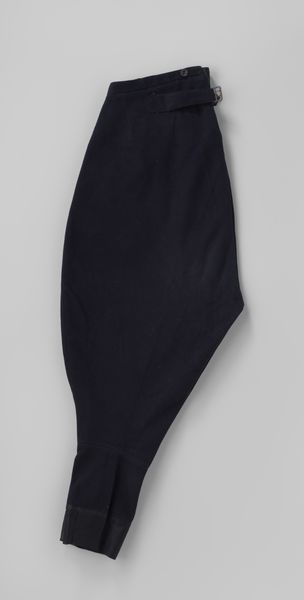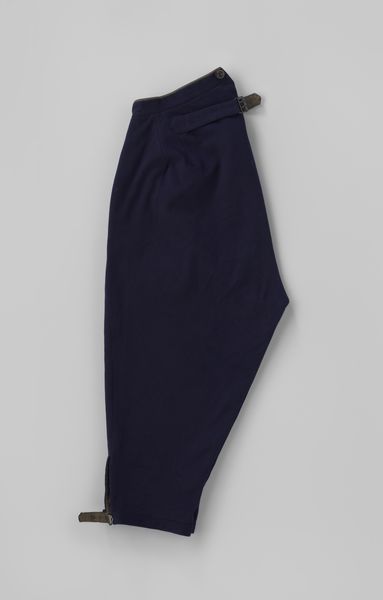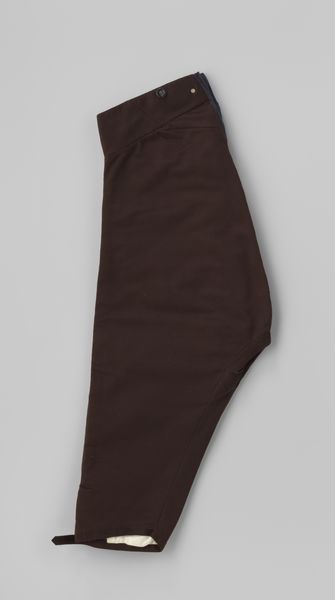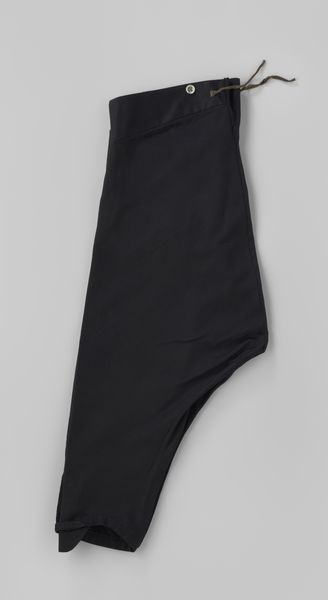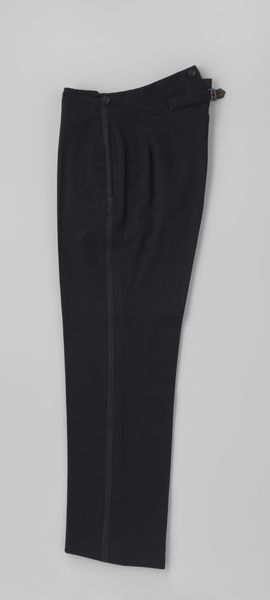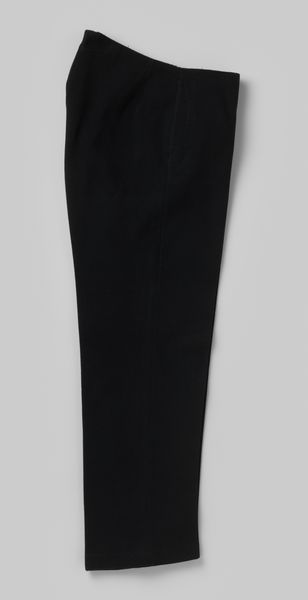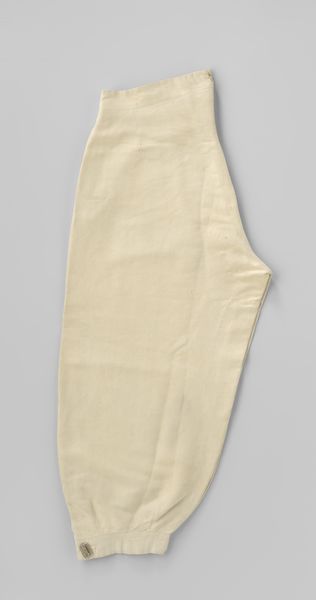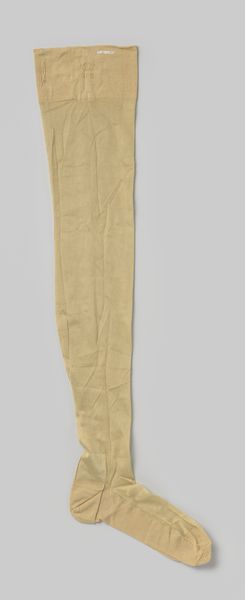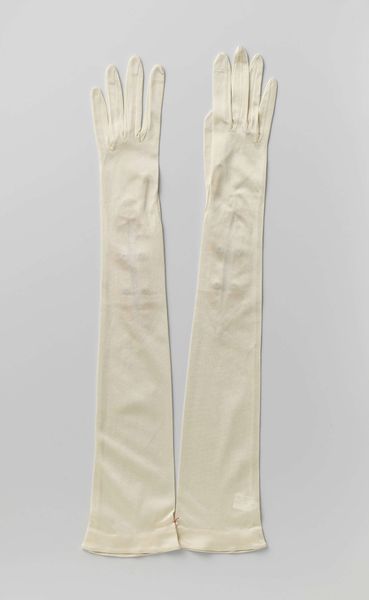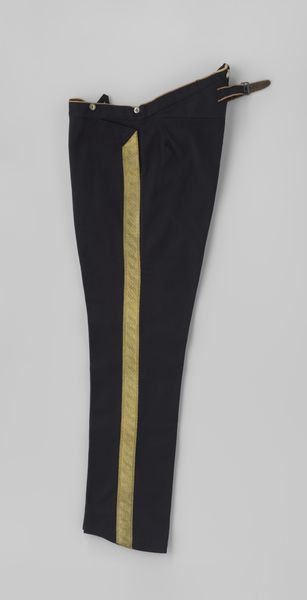
textile, photography
#
portrait
#
still-life-photography
#
textile
#
photography
#
clothing photography
Copyright: Rijks Museum: Open Domain
Curator: Here we have a photograph of a pair of dark blue rowing trousers made from tricot. They are attributed to Jan Six, dating back to around 1885, currently held at the Rijksmuseum. Editor: Well, immediately they strike me as surprisingly elegant, despite being functional sporting attire. There's a subtle formality in the tailoring; they seem like they’d belong just as well in a somber, understated portrait. Curator: The material is key here; tricot allowed for both flexibility and a close fit, essential for rowing. These weren't just any trousers; they represent the rise of leisure and sporting culture among the upper classes. Who was Jan Six? What class strata do these emerge from? The texture tells an entire social story. Editor: I'm thinking about the wearer’s movement, all that concentrated energy propelling a boat. But there’s something melancholic about them too; seeing an object once worn, now still, almost echoes a life lived. Plus, the choice of blue seems deliberate, hinting at depth and calm amidst all that activity. Or maybe they simply look like every dark jean in my closet after ten washes! Curator: Don't forget, natural dyes fade over time and use. Speaking of material use, look at that reinforced stitching and buckle. This tricot weaving, possibly employing skilled labor and costly materials, ensured durability—a tangible link to Victorian notions of craftsmanship and perhaps a little show of status. The darker shades also minimize the signs of use to promote durability. Editor: You're right, every stitch is evidence of someone's labor. I can imagine Jan himself feeling the coolness of the fabric against his skin, hearing the splash of the oars... such quiet, yet tangible sensory echoes from over a century ago! Curator: Exactly. From an art historical perspective, we are really looking at class status represented here through consumption. The cost, the material choice, all signifiers of culture, all the values embedded in textiles. Editor: Makes you think about our clothing choices now. Will someone look at a photograph of our gym shorts in 130 years and see us? Our aspirations, and our history etched into a fading textile? Curator: Precisely, everything has an impact on materiality and making. Editor: Well, next time I’m folding laundry, I’ll remember this! It gives me a new respect to all these mundane materials of use. Thank you for your insights.
Comments
No comments
Be the first to comment and join the conversation on the ultimate creative platform.
